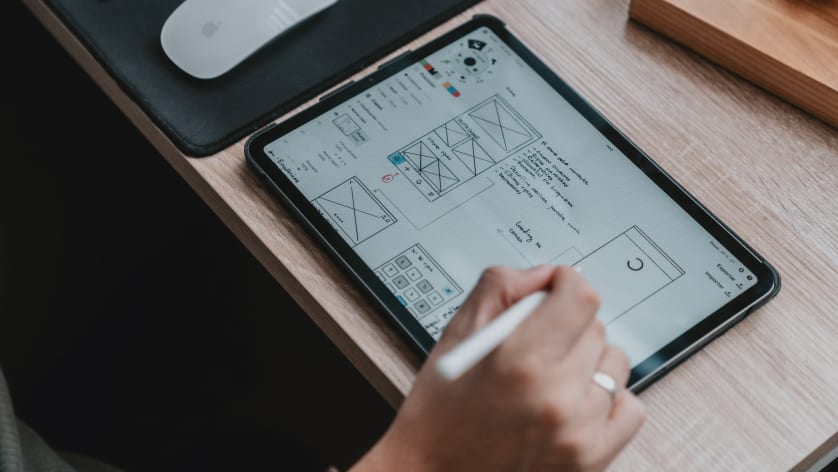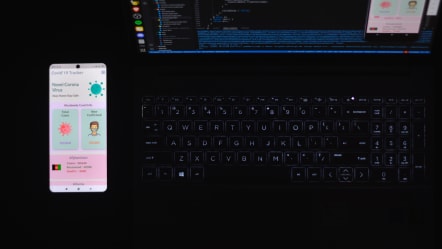Was ist UX-Design?

User experience (UX) design is the process of creating products that provide a seamless and meaningful experience to users that is relevant to them. Every UX designer's objective is to solve usability issues and create a great online experience by utilizing beautiful visuals, easy accessibility, and a fluid user flow.
What is UX Design?
All digital experiences you encounter have been designed by UX designers. The user experience is a top priority for all of your favorite apps. It is the job of every UX designer to create a seamless experience that will keep users coming back to the product.
The Lyft app's main screen is designed to be free of distractions so that you can focus on the task at hand: getting a ride. By conducting thousands of hours of research and testing, UX designers have found that customers can use the service easily, information is readily available, and the overall design is pleasing to the eye; all of which contributes to a happy customer experience.
“Design is a means of communication that necessitates a profound comprehension of the individual with whom the designer is communicating” - Donald A. Norman, User Experience Architect
"A well-researched design communicates and connects with a user in a way that makes them feel comfortable and understood" is a quote from a leader in design that emphasizes the importance of UX. The primary goal of a UX designer is to determine how to most effectively communicate with users. Which features are important? What will make a user cross the verge to becoming a customer?
Designers must use data gathered from research sessions and interviews to inform the design of the page. Afterwards, they collaborate with other members of the UX group to include outstanding visual designs that effortlessly guide users down a conversion pathway.
UX Design Process
In order to successfully execute one of their designs, UX professionals must methodically follow a process. An example of the steps that may be taken by UX designers to bring their ideas to fruition is given below.
1. Understand Problems Through User Research
To be an effective UX designer, it is essential to first understand the problem that needs to be solved.
A UX team frequently allows users to test out new or existing company products or sites in order to give the team unbiased feedback on what works and what doesn’t. UX teams will identify user personas and draft strategies accordingly.
Data from both users and teams is necessary to establish a starting point for UX designers.
2. Designing the Product
Designing the product is far more costly than one might think. UX teams dedicate weeks or months to taking a product from concept to fruition. By utilizing all of the user and team-generated data, the team is able to start planning their product. This process involves user interface (UI) practices, for example sketching, white board flowcharts and wireframing, in order to share and communicate ideas with stakeholders.
Based off of the initial design meetings, the design team will create mockups. These mockups are not functional, but they accurately portray the look and feel of the final product. Once the user flow, visuals and wireframes are completed, styling can commence. This is when images, colors, typography, etc. are added to the product.
It is crucial for software engineers and product managers to be involved early on in the design process of each product, as they are the ones who will make the product execute its tasks.
3. Testing
Once the user experience product finishes the design phase, it proceeds to more testing. To avoid launching a broken product, each product goes through vigorous testing to ensure proper function and meet a user’s standards. Testing is done internally and externally in order to get the best feedback possible. Is it easy to use? Does if fix our problem? How fast is the process? Among others, these are the questions that need to be answered before the release of a new product.
4. Product release
When all stakeholders have signed off on the new product, it will be time to ship it out to the world. The UX design team will take a few moments to appreciate all of the effort they put into creating a revolutionary product; then they will get back to work fielding consumer feedback for the product and gathering more information for future ideas.
Difference Between UX and UI
The tech community often confuses UX with UI. However, these terms have different meanings. UX refers to "user experience design" while UI means "user interface design."
In short, UX design encompasses any interaction between a customer and a company’s products in order to make it easy, efficient and an overall worthwhile experience for the user.
UI is a digital term that refers to the point of interaction between a user and a digital product. UI designers specialize in creating visuals and interactive elements for digital products, from app icons to buttons and color schemes.















